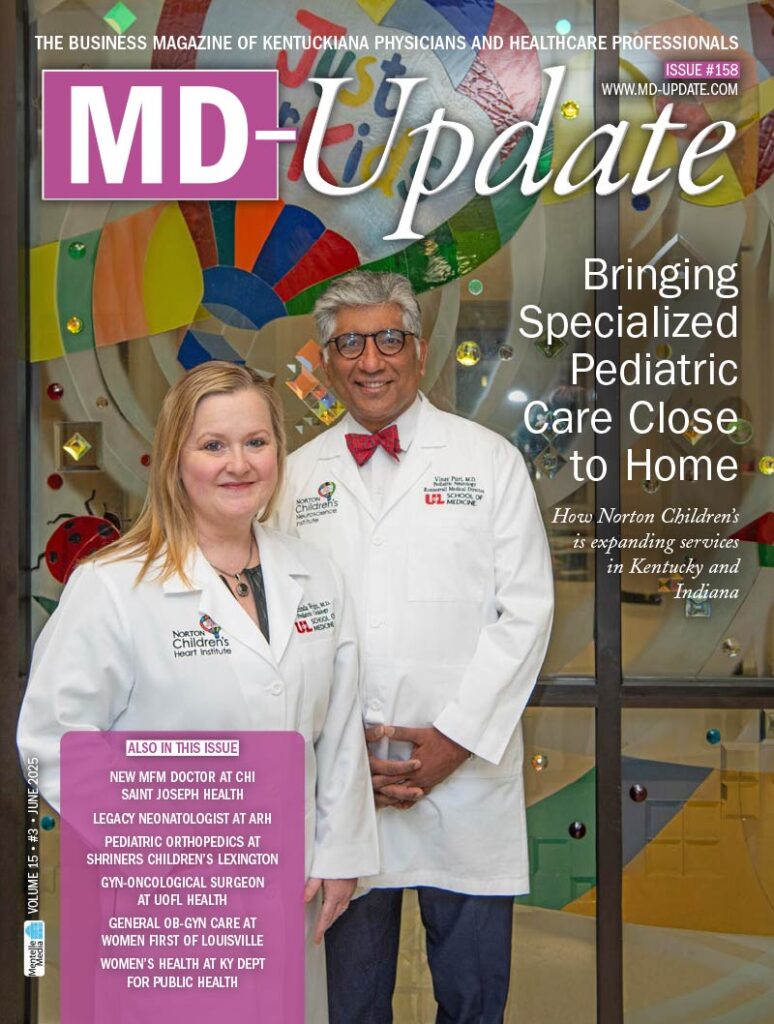Physician encouragement to get screened and quit smoking is essential and effective
FRANKFORT Lung cancer is the leading cause of cancer death in Kentucky, despite being the third most common type of cancer. Over 4,500 mothers, fathers, sisters, brothers, sons, and daughters are diagnosed with lung cancer each year. Cigarette smoking remains the top cause of lung cancer, with eight in ten cases tied directly to the patient’s own cigarette use.1 However, it’s important to note that radon exposure (a colorless, odorless gas that is naturally found in some types of rock), occupational exposure, and exposure to secondhand smoke are also risk factors and can multiply one’s risk.
In the past, lung cancer was a death sentence, but with modern medical technology and medications, lung cancer can be treated if caught at an early enough stage. Six in ten adults will be alive five years after diagnosis if lung cancer is caught at a localized stage.2 If cancer is caught early, patients will not only live longer but also have a higher quality of life. Unfortunately, only 24 percent of cancers are caught at a localized stage. This is why screening is so important.
Increasing Lung Cancer Screening
Current recommendations for an annual low-dose CT scan are for those who:
- Are 50 to 80 years old (or 50-77 through Medicare);
- Have a 20-pack-year smoking history;
- Currently smoke or have quit within the past 15 years.3
Low-dose CT scans are quick and painless and involve no needles or dyes. For those who meet the screening criteria, an annual lowdose CT scan is covered by insurance with no co-pay to the patient.
However, only one in ten eligible Kentuckians are being screened for lung cancer.4 By comparison, over 70 percent of eligible women have received mammograms and 74 percent of eligible Kentuckians have received colonoscopies or equivalent colon cancer screening. Why is there such a huge discrepancy in screening rates between cancers?
There are a few reasons why lung cancer screening rates lag behind that of other cancers:
- A change to guidelines in 2021;
- Stigma around smoking and cigarette use;
- Lack of established protocols in health care settings.5
The U.S. Preventive Services Task Force re-examined the evidence for lung cancer screening and found benefit for lowering the age of screening from 55 to 50. This important change means millions more Americans are eligible for screening that were not previously able to access the testing. Changes to screening protocols can take time to filter to primary care providers, who have a busy case load with more work to be done than hours in a day. One of the stated goals of the state Lung Cancer Screening Program is to provide outreach and education to healthcare providers to make sure everyone is familiar with the new guidelines.
In 2024 it is widely established that smoking has adverse health consequences and remains the leading cause of death and disability in Kentucky and the United States. Unfortunately, common language about smoking calls it a habit, rather than, more accurately, a nicotine addiction, and people who smoke blame themselves for being unable to quit, rather than blaming commercial tobacco companies that deliberately engineered cigarettes to be more addictive. That self-blame can manifest as 4 American Lung Association. 5 Trippette M, et al. An assessment of primary care and pulmonary provider perspectives on lung cancer screening. Annals of the American Thoracic Society. Vol. 15; 1. September 21, 2017. defensiveness when patients are asked standard questions by providers about tobacco use history. As addiction is a chronic, relapsing disease, health care providers can also grow weary of asking the same tobacco questions over and over again, as there is the belief that people will “just quit when they want to.” We know, however, that half of all people who quit smoking do so because their doctor recommended it. Health care provider recommendations absolutely make a difference.
Health care clinics and offices can and should develop policies and procedures about lung cancer screening to increase screening rates.6 Teams should get together to discuss what makes the most sense in their patient flow, but some recommendations follow. First, every single patient should be asked about tobacco use at every visit. This reduces the likelihood that tobacco users feel singled out as it is a standard question, reduces likelihood of missing a tobacco user who has potentially just started using or relapsed recently, or simply forgetting in the hustle and bustle of the day. Clinic staff should make sure they are aware of current lung cancer screening guidelines, as well as the benefits and risks of lung cancer screening, so they are able to help patients make the decision whether screening is right for them. Since time is at a premium during patient visits, having hard copy materials such as brochures and fact sheets can both act as a prompt for providers and patients, and as an educational resource for patients.
If interested in downloadable fact sheets and posters about lung cancer screening, please email LungCancer@ky.gov for pdfs.




